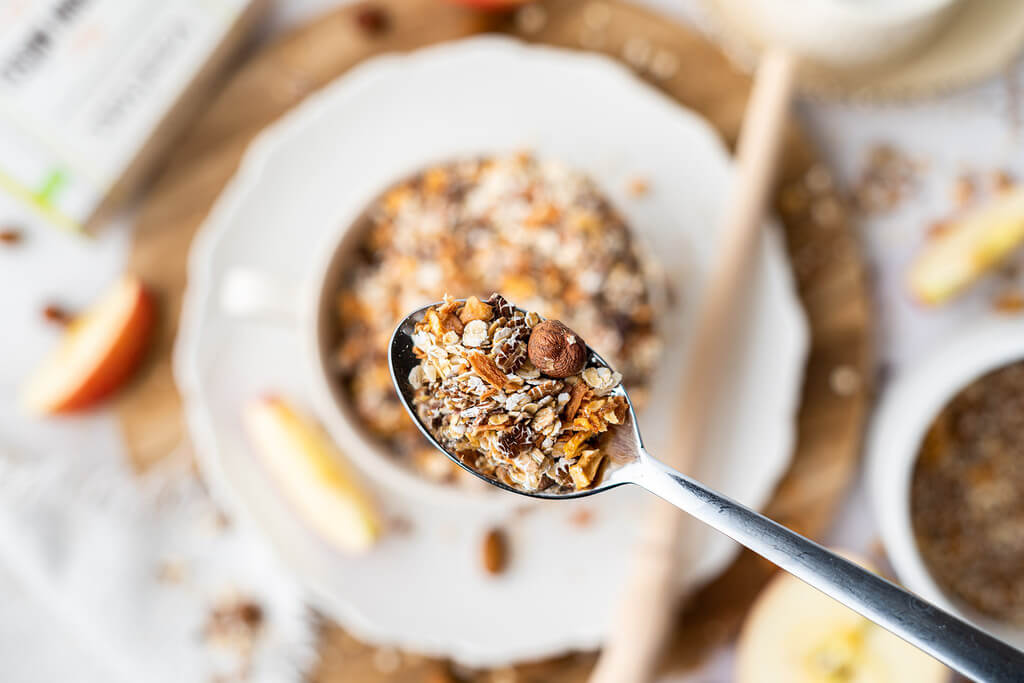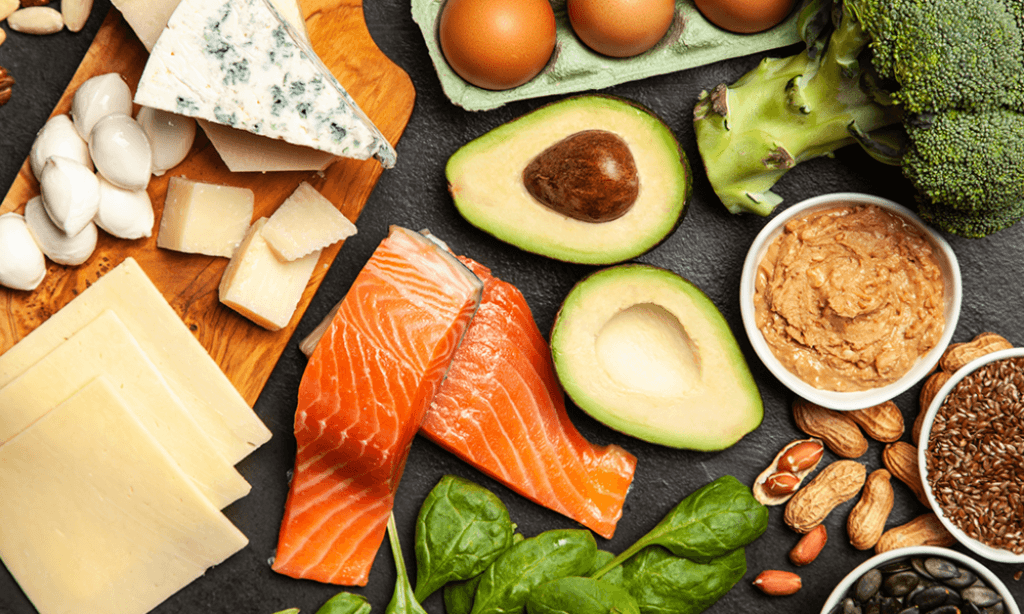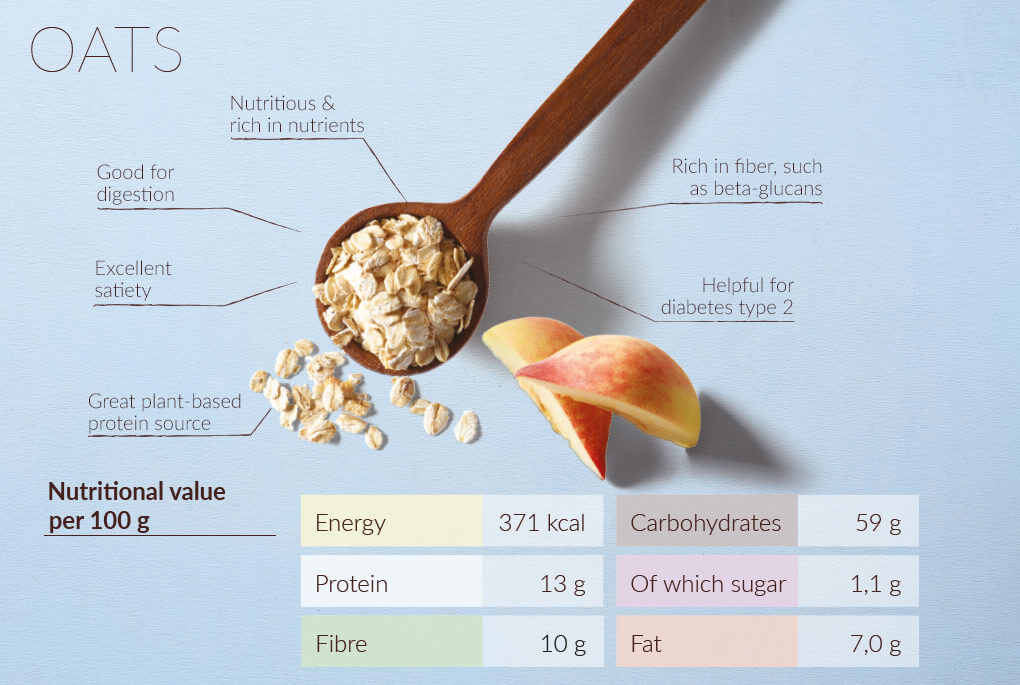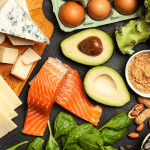Nutrient density – What you need to know about it
June 3, 2022- Healthy lifestyle
- Nutrition

Again and again you can read about “nutrient density” in nutrition blogs. It is supposed to be an important indicator for healthy food and also indispensable for a healthy diet. But what is really behind it? This is exactly the question we will explore in this article.
Übersicht
What is meant by nutrient density?
Nutrients are those components of food that provide the body with important substances that are essential for maintaining vital functions. A distinction is made between macronutrients and micronutrients.
Macronutrients are all those components of food that provide energy in the form of calories. These include fats, carbohydrates and proteins.
Micronutrients, on the other hand, do not provide the body with energy, but with important products that the body needs for a wide variety of functions. While a good coverage of the respective vitamin or mineral requirements leads to more well-being, a deficiency can cause serious diseases.
| Nutrients with energy | Nutrients without energy |
| Fat | Vitamins |
| Carbohydrates | Minerals and trace elements |
| Proteins | Water |
| Alcohol | Some fibers |
Now it is the case that especially in western industrialized nations the nutrient density is discussed quite controversially. The reason for this is that in classic Western cuisine, too many high-calorie foods are consumed, while the amount of important vitamins and minerals consumed is often comparatively low.
The result is low nutrient density, which in the longer term poses a risk for widespread common diseases such as obesity or chronic diseases. But what exactly is nutrient density and how is it calculated?
How is the nutrient density calculated?
Nutrient density is basically nothing more than the ratio of energy to nutrient content. The higher the value, the higher the nutrient density and the healthier the food. The formula is therefore as follows:
Nutrient density = nutrient content (g) : Energy content (kcal)
The assessment is always made for a nutrient in relation to the energy content of the food. For example, the amount of the trace element iron in relation to the energy content for the foods to be compared.
It is also common practice to evaluate foods based on the content of essential nutrients. These include vitamins, minerals, essential amino acids and fatty acids.

These essential nutrients are considered in relation to the energy content. In this calculation, berries, mushrooms and herbs have a particularly high nutrient density. These products therefore, have a lot of nutrients with a low amount of energy at the same time.
Energy density versus nutrient density
One concept that is often mentioned in the same breath as nutrient density is energy density. The reason for this is that the two concepts overlap.
A high energy density indicates foods that provide many kilocalories but only a small amount of important nutrients (vitamins, trace elements, minerals). Therefore, these products have a low nutrient density. The energy density is calculated and defined as “energy content per gram of food”.
A high nutrient density means that the food contains many important nutrients (vitamins, trace elements, minerals) but only a few calories. Nutrient density is defined as the “nutrient content of a food per kilocalorie”.
So the two concepts are, in a sense, opposites.
The most important foods in the nutrient check
So much for the theory behind it. Let’s now take a look at some categories of food according to their nutrient and energy content to give it some practical relevance.
Fruit and vegetables
Nutrient dense foods are mainly products that are very rich in water, vitamins and minerals.
- Mushrooms
- Herbs
- Citrus fruits
- Water rich vegetables
The following foods have a somewhat higher energy content and consequently a somewhat lower, but still extremely high nutrient density:
- Fruit
- Starchy vegetables
- Legumes (beans, lentils, etc.)
Nuts also belong to the legumes, but they usually have a much higher energy density, although they also contain numerous important fat-soluble vitamins and minerals. You should therefore enjoy them in moderation so as not to go overboard, but at the same time get the valuable nutrients.
Cereals and pseudocereals
Cereals and pseudocereals, for example oats, pasta, quinoa or even rice, are rather in the middle on the scale of nutrient and energy density. On the one hand, they have a relatively high amount of energy due to their high carbohydrate content, but at the same time they also provide important minerals.
Thus, on average, they have a medium energy density and at the same time a medium nutrient density.
Meat, fish and dairy products
Animal products tend to have a higher energy density than plant foods. This is mainly due to their often high protein and fat content.
While some types of meat, such as turkey or chicken, have a comparatively low energy density, the situation is different for fattier types of meat and especially fish. Salmon or fatty meat and sausage products in particular are nowhere near as nutritious as fruit and vegetables.
The picture is relatively similar for dairy products. While lower-fat yogurt varieties or even low-fat quark are somewhat lower in energy, their higher-fat counterparts have significantly higher energy densities and thus lower nutrient densities.

Some plant-based foods are also high in fat. These include avocados and a wide variety of nuts and seeds. In contrast to animal products, however, they often contain higher amounts of valuable micronutrients.
Confectionery, ready meals and alcohol
The group with by far the lowest nutrient density includes confectionery, most highly processed convenience foods, and alcohol. The reason for the low nutrient density is the high content of fats and carbohydrates, which in combination with a low amount of vitamins and minerals leads to an extremely high energy density.
What the nutrient content now means for practice
For practice and your personal dietary habits, you can remember the following. A high energy density is in principle suboptimal, but a high nutrient density is desirable.
However, it is important that you pay attention to your respective goals in your nutrition plan. For example, if you want to gain a lot of muscle mass, you will probably have no choice but to rely more on products with a high energy density. Otherwise, the calorie target you are aiming for may be difficult to meet.
If, on the other hand, you want to lose weight or have the goal of maintaining as healthy a lifestyle as possible, the recommendations look different again. Now you should increasingly resort to nutrient-rich foods with a high nutrient density in order to supply your body with healthy amounts of important vitamins, minerals and fiber. On the other hand, you should avoid foods with a high energy density as much as possible.
The nutrient density at breakfast
If you want to maintain a healthy lifestyle, it’s best to start in the morning. A balanced breakfast with a high nutrient density is the perfect start.
If you’ve been starting your day with bread and jam, you might want to switch to a healthier option. Because jam is one of those foods that has a high energy density and is therefore rather suboptimal for you and your health.
Porridge, for example, is a breakfast option that is significantly healthier for you due to its high nutrient density and also satiates you for longer. Our Verival Sport Porridge Raspberry Cocoa, for example, has a much more beneficial nutrient density than a jam sandwich.

This is largely due to the oat flakes that form the basis of the porridge mixture. Since oats are rich in various vitamins, minerals and especially fiber, the porridge keeps you full for a long time and supplies your body with all important nutrients.
So the start of the day is easy and you are bursting with energy!








